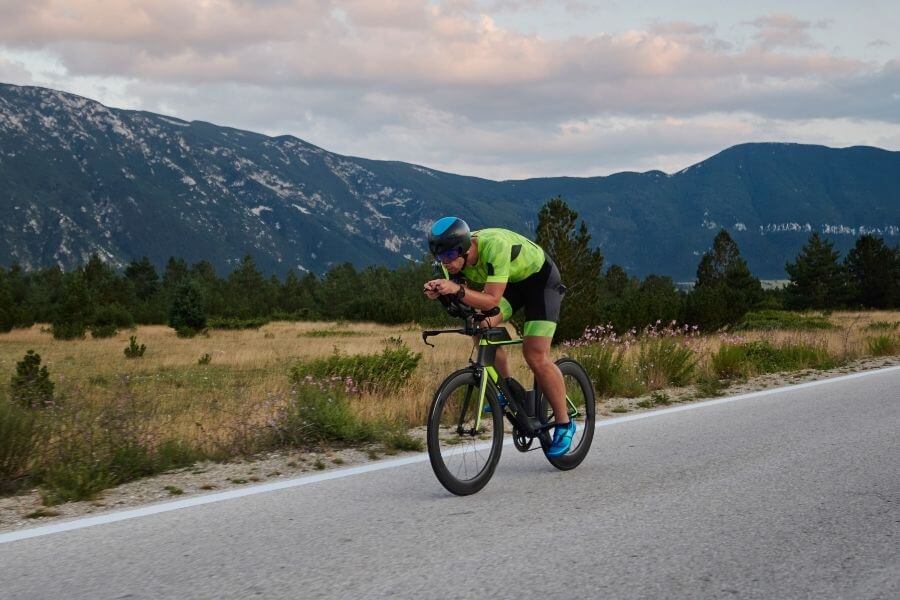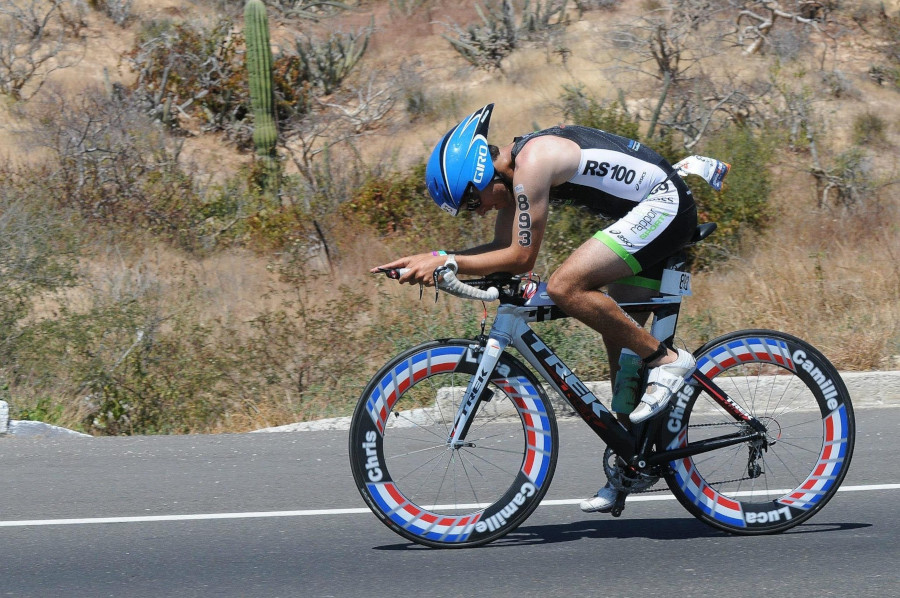Counterreloj and Triathlon bicycles have a single purpose: winning the chrono seconds. For this reason, they use innovative designs and apply the latest technology in materials and components.
Spectacular and striking, they might seem identical bicycles. But bikes or
goats of counterreloj and triathlon have, each, their peculiarities. We analyze and face them to know what differentiates them and how cyclists and triathletes use them.
The counterreloj bike: what is it and what is it for
The counterreloj bicycle is an aerodynamic bicycle that is mainly used in competitions against the chrono, both individual and teams. Assemble a carbon fiber box where the aerodynamic concept is taken to maximum expression.
The tubes of the painting have specific ways to ensure that the resistance against the wind is minimal. In this sense, the wheels have high or aerodynamic profile tires, even completely opaque, as is the case of the lenticular wheels.
[Caption id = "Attachment_6409" Align = "Alignnone" Width = "900"]

Image: Depositphotos[/caption]
In short, the design and geometry of this type of bicycles squeeze to the maximum the ability to roll at high speed during the highest possible time.
In the counterreloj bicycles, the base or distance axes is shortened with respect to a bike Aero conventional
Its geometry is more aggressive than that of a route bicycle
Aero, with a very compact rear triangle. The wheel, in many cases, is placed just below the armchair tube, which shortens the wheelbase. This modification favors a very coupled posture of the cyclist, with the back almost parallel to the ground.
The goat Triathlon: characteristics and purpose
The
goat Triathlon is also an aerodynamic bicycle, but with differences in geometry and components, since its purpose is not exactly the same. The average and long distance triathletes are used in the cycling sections of their tests. It is a bicycle whose sole objective is to roll through the plain at high speed.
Its design focuses not only on aerodynamics, but also on cyclist's comfort. In a triathlon, the distance in the cycling modality can range between 90 and 180 km. Therefore, it is a bicycle with a larger base. The wheelbase is somewhat larger than that of a counterreloj bike and the angle of the armchair tube is more vertical, which penalizes in aerodynamics, but increases comfort.
TAnto the armchair as the coupling (or triathlete) handlebar confer a cyclist position where the important thing is also comfort. They also usually have an extra anchoring in the table to install a portabidon and thus guarantee the provisioning during the test.
Counterreloj or triathlon bike: What differentiates them?
Although the starting point of a counterreloj bike and a
goat Triathlon is similar, its differences in use and aerodynamics entail some peculiarities.
Different geometry
The picture of a bicycle focused on counterreloj is, more reactive, agile and nervous. The position of the armchair is somewhat more delayed than in triathlon and dispenses with certain accessories, such as the second portabidon. The result, more acceleration and lighter with respect to a
goat of triathlon
Different comfort
A
goat Triathlon offers a more comfortable cyclist position, as it must allow him to roll more coupled, almost lying on the armchair. On a bicycle to counterreloj, the effort will not generally exceed the time. Therefore, an aggressive design can be used that allows a more aerodynamic posture. Elements such as the armchair or the handlebar are, of entry, less comfortable, but more compact and light than those of the triathlon bike.
Different accessories
During the three or four hours that the triathlete pedals in its
goat, need liquid and solid supplies. Therefore, specific triathlon bikes include compact compartments anchored to the painting, aerodynamic design. Let us think, for example, in the second portabidón, an accessory that dispenses with the counterreloj bike.
[Captation id = "Attachment_6974" Align = "Alignnone" Width = "900"]

Image: ElihudelValle (Pixabay)[/caption]
Can you use a counterreloj bicycle in a triathlon?
The answer is simple: yes.
It is possible and may not be a crazy choice for short and medium distance triathlons, or with many rhythm changes. Its most aggressive and agile character can favor these situations. In fact, many brands offer a unique model for counterreloj and triathlon. Then it is the cyclist who adapts components and accessories depending on the discipline.
Counterreloj bicycles are more limited in design and geometry, in accordance with the UCI standards
It is true that for great background tests, type
Hombre de Hierro, it can be an awkward bicycle.
In the professional field, the Biciclets of Course have strict design limitations, marked by the International Cycling Union, which prevents customizing its geometry to the maximum. In triathlon tests, however, each
goat You can count on a specific design for each corridor.
Utility beyond competition
Both the counterreloj bike and the goat of
triathlon They are bikes designed to compete. This entails important investments in light material and aerodynamics by brands. Hence its high price, not suitable for all pockets.
They can be a good option as a second bicycle, focused on level training
Neither of them serves to roll relaxed. In fact, its geometry and behavior require a certain level and preparation. However, if you compete occasionally on the road and not eschatimas in spending, acquiring a counterreloj or triathlon bike can be a good idea. As a second bicycle, they can help you make the quality leap that your workouts need.
With these machines you will accustom the body to work with great developments and perfect your aerodynamic posture on the bicycle. In short, you can improve your ability to roll in Llano, accumulating many kilometers at high speed.
 Image: Depositphotos[/caption]
In short, the design and geometry of this type of bicycles squeeze to the maximum the ability to roll at high speed during the highest possible time.
Image: Depositphotos[/caption]
In short, the design and geometry of this type of bicycles squeeze to the maximum the ability to roll at high speed during the highest possible time.
 Image: ElihudelValle (Pixabay)[/caption]
Image: ElihudelValle (Pixabay)[/caption]












